Echinodorus uruguayensis
Scientific name: Echinodorus uruguayensis
Family: Alismataceae
Maximum size reached under cultivation: 20 - 55 cm (7.87 - 21.65 inch)
014
Recommended pH range: 6.1 - 7.8
Recommended water hardness: 4 - 18°dGH (71.43 - 321.43ppm)
0°C 32°F30°C 86°F
Recommended temperature range: 15 - 26 °C (59 - 78.8°F)
Preferred propagation method: Runners
Native to: South America
Growth rate: Normal
Recommended substrate: Fine gravel
Lighting requirements: Medium
Ideal placement in tank: Midground
Family
Alismataceae
Common Name
Uruguayan Sword Plant
Origin
Echinodorus uruguayensis is native to South America, specifically found in regions such as Brazil, Uruguay, Argentina, and Chile. It naturally inhabits rivers, streams, and wetlands, where it thrives in both fully submerged and partially emersed conditions, adapting well to fluctuating water levels typical of its environment.
Propagation
Echinodorus uruguayensis reproduces primarily through runners. The mother plant sends out horizontal shoots along the substrate, and new daughter plants form at intervals along these runners. Once the daughter plants have developed their own root systems, they can be carefully separated from the mother plant and replanted in the substrate. This propagation method allows the plant to spread effectively and create a lush, dense environment in the aquarium. While flowering can occur when the plant is grown emersed, propagation by runners is the most efficient and common method in aquariums.
Difficulty
Easy. Echinodorus uruguayensis is a hardy and adaptable plant that can thrive under a variety of water conditions. Its low-maintenance nature makes it suitable for aquarists of all experience levels, from beginners to experts.
Short Description
Echinodorus uruguayensis, commonly referred to as the Uruguayan Sword Plant, is a versatile aquatic species that can reach heights of up to 55 cm (21.65 inches), making it ideal for midground to background placement in aquariums. Its long, ribbon-like leaves, which can vary in width based on environmental factors, add vertical interest and texture to aquascapes. The plant grows well in fine gravel substrates and benefits from medium lighting to maintain its healthy, vibrant appearance. Regular nutrient supplementation, such as the use of root tabs, and CO2 injection can promote even stronger growth and enhance the plant’s leaf coloration. This plant grows at a moderate pace, providing a stunning focal point in larger aquariums.
Maintenance and Care
Echinodorus uruguayensis thrives in a pH range of 6.1 to 7.8 and tolerates water hardness from 4 to 18°N (71.43 - 321.43 ppm). It is well-suited for tropical aquariums with temperatures between 15 and 26°C (59 - 78.8°F), making it versatile for a range of tank environments. While it grows well in medium lighting, brighter lighting can encourage more vigorous growth and richer leaf coloration. For optimal results, a nutrient-rich substrate and periodic fertilization are recommended. Although Echinodorus uruguayensis is relatively undemanding, regular pruning of dead or damaged leaves will help maintain its health and prevent overcrowding in the tank.
Compatibility
This plant is compatible with a variety of peaceful community fish, including tetras, rasboras, and dwarf cichlids. Its tall, slender leaves provide shelter and hiding spots for smaller fish and fry, making it an excellent choice for aquarists looking to create a natural, safe environment for their aquatic inhabitants. While herbivorous fish may occasionally nibble on its leaves, Echinodorus uruguayensis is generally robust enough to withstand minor grazing. Monitoring fish behavior is recommended, especially in tanks with larger plant-eating species.
Submersion and Aquascaping
Fully submersible, Echinodorus uruguayensis is a favorite in aquascaping due to its graceful, flowing appearance and adaptability. Its long, ribbon-like leaves create a dynamic vertical structure in the aquarium, making it an excellent choice for midground or background planting. This species thrives in South American biotope aquariums, where it complements other plants, driftwood, and rockwork, adding natural beauty to the tank. Given its size, it is best suited for medium to large aquariums, where it can grow without overshadowing smaller plants. Its low-maintenance nature and striking appearance make it ideal for aquarists looking to add elegance and visual depth to their aquascapes.

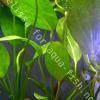 Echinodorus “Ozelot”
Echinodorus “Ozelot”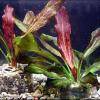 Echinodorus “Red Flame”
Echinodorus “Red Flame”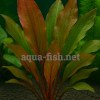 Echinodorus “Red Special”
Echinodorus “Red Special”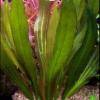 Echinodorus “Rubin”
Echinodorus “Rubin” Echinodorus “Tricolour”
Echinodorus “Tricolour”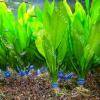 Echinodorus amazonicus
Echinodorus amazonicus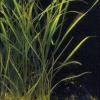 Echinodorus angustifolius
Echinodorus angustifolius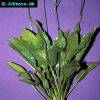 Echinodorus bleheri
Echinodorus bleheri Echinodorus cordifolius
Echinodorus cordifolius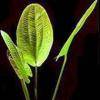 Echinodorus grandiflorus
Echinodorus grandiflorus Echinodorus horemanii
Echinodorus horemanii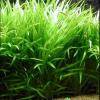 Echinodorus latifolius
Echinodorus latifolius Echinodorus macrophyllus
Echinodorus macrophyllus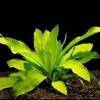 Echinodorus major
Echinodorus major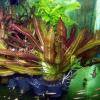 Echinodorus osiris
Echinodorus osiris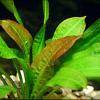 Echinodorus parviflorus
Echinodorus parviflorus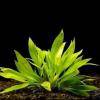 Echinodorus quadricostatus
Echinodorus quadricostatus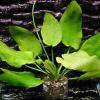 Echinodorus schlueteri
Echinodorus schlueteri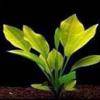 Echinodorus subalatus
Echinodorus subalatus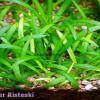 Echinodorus tenellus
Echinodorus tenellus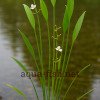 Sagittaria graminea
Sagittaria graminea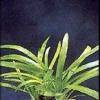 Sagittaria platyphylla
Sagittaria platyphylla Sagittaria subulata
Sagittaria subulata